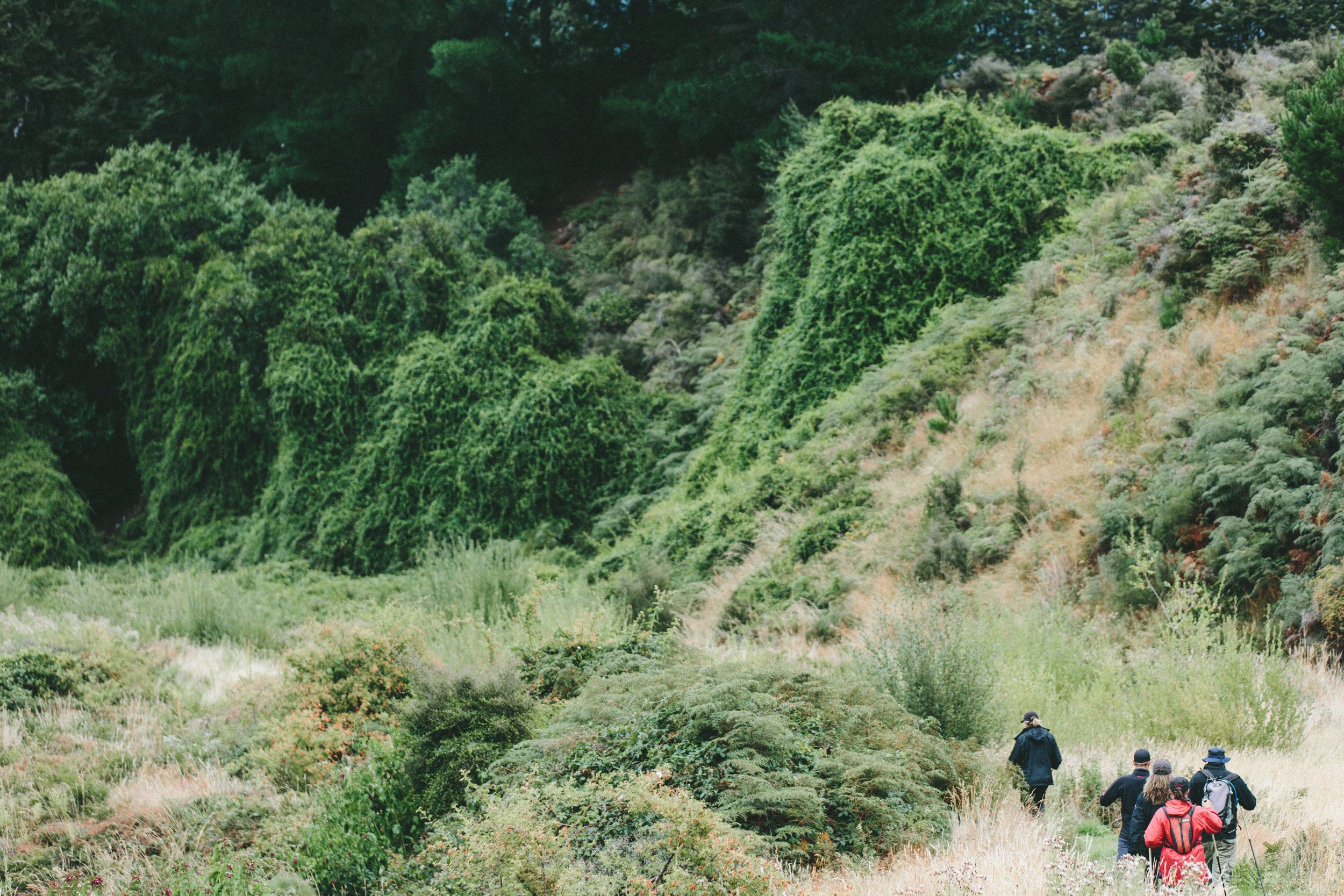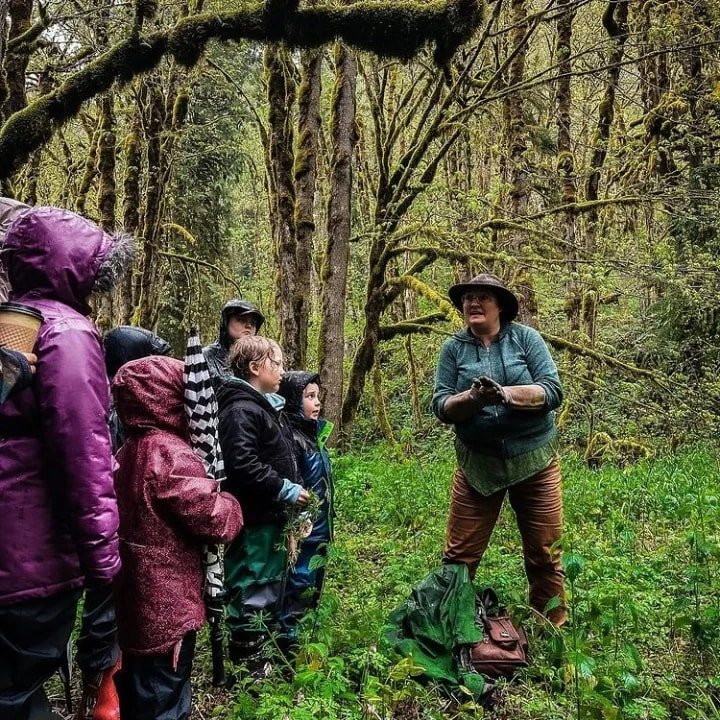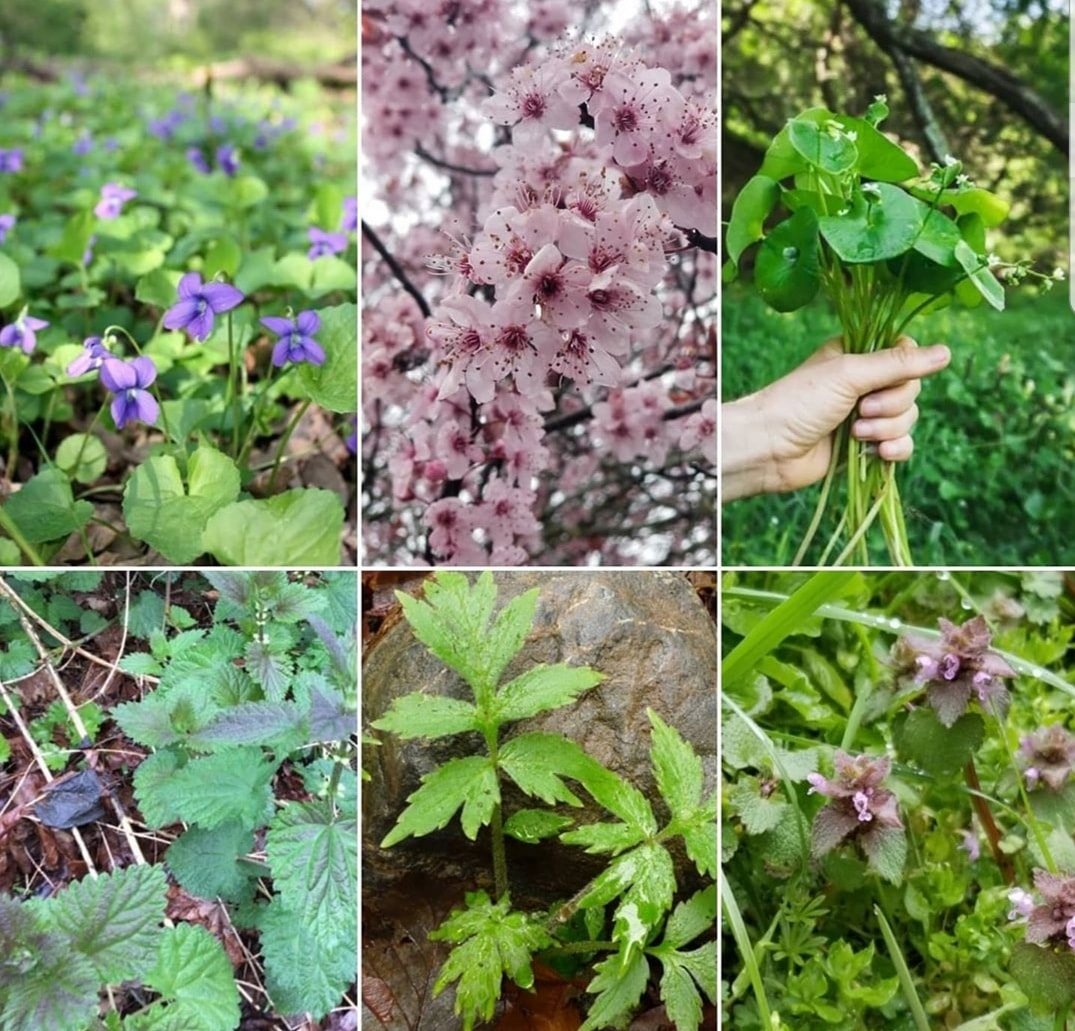
Welcome to my Past and Future Inspirado Page! Where you can forage for useful bits of herbal lore, recipes, philosophy, dreams, and plant-specific features.
My intention is to share a longer wildcrafting highlight every couple of months, which you will find below, and also photos which are bookmarks for musings I am in the process of writing. Green Blessing! ~Erika
June 2022 --MUSHROOM PONDERING -- While gathering boletes in the gold of an autumn evening, I thought about how similar our relationship with mushrooms is to our connection with the ocean. Meaning our knowledge about the oceanic and mycelial worlds is dwarfed by all we still don't understand, yet we are consistently fascinated, as our history and lore show. And as with the ocean, by way of respect and paying attention, we can have a beautifully harmonious, greatly beneficial relationship with mushrooms. Especially as our collective knowledge and cultural awareness of the mycelial world is expanding daily. My own fascination with mushrooms has never been primarily about edibility, although that is certainly part of it. An elder and fellow outdoor enthusiast once told me, "There are old mushroom hunters, and there are bold mushroom hunters. But there are no old, bold mushroom hunters,” and I believe this adage. During my foraging classes, you will hear me say, "Verify, verify, verify." It's not clever or sexy where slogans go, it's just common sense and can make a critical (live or die) difference while foraging. Correctly identifying in the field takes diligence and delayed gratification. Harvesting with confidence becomes possible over time, but the only foolproof way to know and forage safely is with a spore print and/or microscope. All that being said, foraging is for every age and level of experience. With caution and patience (and perhaps the help of a local experienced mushroom guide), familiarity will grow like mycelium with every season!
Oxbow walk with a local homeschool group
Devils Club - an invaluable ally, harvested with deep respect and caution
August 2022 --ON GOLDENROD -- Goldenrod, also known as Solidago Canadensis, has just begun to bloom, and just before the flowers bloom is the perfect time to harvest the top half of the plant (some leaves but mostly flowers), for tea or medical use. Goldenrod is an anti-inflammatory ally used internally and externally. It is supportive of the kidneys, liver, and bladder, as well as the upper respiratory and urinary systems. For herbalists and foragers, goldenrod is a welcome sight; her uplifting, bright yellow flowers beckon from the side of the path and cheer the spirit and remind us to gather her much-needed gifts for herbal medicine uses. But one lookalike, ragweed, blooms at the same time and causes headaches and allergy symptoms. As a result, goldenrod has an undeserved reputation as a nuisance. Interestingly, it was only until the last couple of decades that goldenrod was used in excess to make actual rubber before it was made synthetically; Goldenrod rubber is better quality and lasts longer. I might have to research and explore that someday as a DIY experiment at home! Goldenrod tea reduces pain and swelling and assists with sore throats and colds, as well as gout. It heals wounds externally as well as being brilliant for alleviating muscle and joint pain. I'll be adding the infused goldenrod oil to my therapeutic oil blend and healing salve once it has been infused for a dozen or so weeks. And I put some in vases on my mantle, altar, and kitchen table too! Because beauty is heart medicine, and wildflowers are my favorite.
Gathering Nettles, Pacific Waterleaf, Violets, Cleavers, Miners Lettuce and Chickweed with my family in Troutdale Oregon
October 2022 - ON SOLOMON’S SEAL -- Autumn is time to harvest Solomons Seal, also known as Polygonatum Biflorum. The young shoots and blooming flowers are tasty in spring, but it's the rhizome we are after come fall, as the stalks and leaves are turning color and beginning to fold over. Solomon’s seal was given this name because the gnarly roots, which are rhizomal, grow a new shoot each year, and where last year's shoot was, there remains a knuckle-like junction that looks a lot like a ring-seal —like the ring of King Solomon perhaps? The pale root does look a lot like a boney finger! Solomon’s seal roots are harvestable every three-four years from a different section of the patch and can be eaten like a potato, raw or cooked. It has a delicious, richly sweet taste when eaten or drank as a tea, which is actually called an herbal tisane if it does not include tea leaves. As an herbal medicine, it promotes flexibility of the musculoskeletal system, supporting joints and tendons and restoring balance to dryness in the body where muscles and connective tissue are concerned. This nourishing moistening restorative demulcent tonic herb supports our respiratory, digestive, and generative systems; and aids in healing after pregnancy, during PT or athletic training, in cases of prolapse, and in myriad other instances. It's also fantastic as a component of herb-infused oil to apply to joints and other wear-and-tear tenderness externally. Solomon’s seal (polygonatum biflorum) and false Solomon’s seal (maianthemum racemosum) are common woodland plants in our PNW woods, and since they can be confused, they are referred to as "lookalikes." Both have long, elegantly arched stems, but the fruits and flower differences make it easier to differentiate between them. Solomon’s seal produces bell-shaped, yellowish-green to greenish-white flowers in late May or early June, which hang down in clusters from the leaf axils. Months later, the dark blue marble-size berries appear. False Solomon’s seal produces creamy white flowers in a showy plume at the ends of the stems, and flowers earlier than its lookalike, an evolved advantage with pollinators. Ruby pea-size berries appear in late summer. You will find conflicting information among herbalists as to whether these separate Solomon species have the same medicinal properties. Some say they do, and they are just cousins in the same house. Others disagree. Always do ample research and ethically harvest only when you feel confident.
California Poppies - helps sunshine find our hearts when they most need it
December 2022 --MEDLAR: A fairy tale fruit -- When you first encounter a medlar, you are not likely to think how enticing or even edible it appears. Also known as mespilus germanica, medlars are curious, ugly fruits, clearly from the rose family, and they look like giant rosehips. Our ancestors appreciated them as one of the only fruits still edible in winter, and if you find a rare non-native tree here, it's likely because it was once a part of someone's orchard, brought over from the old country in Europe. Despite their unappealing nicknames, and looking like they're rotten when they are ripe, they taste like a spiced date-apple custard! Skeptics are always amazed and won over by the sweetness and creamy mouthfeel. But you can only pick them after they've "bletted"—or gone soft. If they are firm, they aren't ready. If they feel like an over-ripe plum with crackly skin, they are perfect. Squeeze or cut them open, enjoy the custard, and spit out the large seeds. If you don't know where to find an abandoned tree but want to try some, you may also be able to find these around Thanksgiving at your local farmstand. Mine is Giusto's Farms at 162nd in East Portland.
Elderberry Harvest!
February 2023 --ON LATINATE NAMES -- Why do Latin names matter to foragers? I don't heavily refer to Latin names, especially as an entry-level guide, teaching humans of every age. The heart of my work is to plant seeds of ethical wildcrafting and foraging that grow into a passion, as a gateway hobby to broader lifeways and adventures. I want foraging to feel demystified and fun and accessible, and I noticed years ago that kiddos and many adults often lose interest and tune out when Latin words appear. But that doesn't mean they aren't relevant! Or worth overlooking. Despite having more than a dozen common names, each plant has only one botanical name. We can agree we are talking about the same plant IF we know it by its Latin name as well. Each Latin name describes one species within a genus, with specific characteristics. Familiarity with those distinctive characteristics matters because LOOKALIKES exist so often, and you don't want to cause injury or death by taking home a plant that turns out not to be what you thought. Those are not the memories you want to make. And our wild plant allies don't appreciate being unalived. Just don't harvest if you don't know. Verify, verify, verify. One good example of this is our nourishing and prickly friend Nettle, otherwise known as "Jaggy burn, "Ornery Nelly," and "Bitey Pete", which might also be known as "common nettle," "burn nettle, "stinger," and "stinging nettle". In all these cases we might be referring to urtica dioica, which has a half dozen characteristics which make it distinctively unique. American stinging nettle and Native hoary nettle are not the same though easily confused, and worldwide there are 45 genera and 550 species. You can start to see, depending on where you are in the world, we may not know we have the same plant unless we know it by a botanical name and those specific Morphological characteristics attributed to that name. But you don't have to wait to forage until you know all the Latin names. I don't have as many of the Latin names memorized as I could/should, but we have the whole world in our hands and can do a lot of quick verification in the field, thanks to the convenience of technology. I do a lot of triple checking before I harvest anything I am not confident about, and I am learning as I go, on every walk. So even if you aren't so into it that you are creating a materia medica journal and putting Latin names on your jars, Latin names aren't a flex; they are practical! And not just for us wildcrafting nerds.
Stay Well Kitchen Witch Fairy Tale Soup --Because I get asked often for a recipe for how to make a nourishing herby winter soup. And I usually bungle explaining that I don't have a recipe. Note: This soup is fully customizable and I am always told DELICIOUS, whatever the variation of the day: - Begin by make a broth using boiled bones and nourishing dried mushrooms like Reishi, simmering the bones overnight (lid on) or in an instant pot, then remove the mushrooms and bones and add any or all of the following, simmering for 60-90 min after removing the bones: -1-2 Tbsp dried or 1/2 to 1 cup fresh minced: Rosemary, Thyme, Sage, Oregano, Nasturtium, Lambs Quarter, Nettle, Dandelion, Parsley, Smart Weed, Grape leaves -While simmering the herbal broth course chop (quarter to nickle size chunks, organic or whatever you have) any meat or root veggies you have, then toss all thoroughly with a little oil of preference (we use avocado or coconut or olive) and with salt and pepper to taste, and pour on cookie sheets (parchment paper is nice for this) to roast until carmalized on the outside. 350 for 30 min or so. - pour veggies into the broth and simmer 15-20 min - you could definitely also add Kombu or Burdock root (easy to find at Asian Markets) and Astragalus root, but keep the Astragalus in a cheese cloth that is far too fibrous to leave in, and Burdock root needs longer too cook unless shredded. - Feel free to skip the Exotic additions and use fresh kale carrot onion and celery if you are short on herbs, or the company you are serving won't appreciate the other additions. - Serve with herby homemade bread or butter infused with herbs or honey or whatever butter or bread you have. - I put fresh garlic in mine right before eating, but roasted garlic or powdered garlic is also fine. - We made ours with everything listed above, and it was a huge hit, but it's a choose-your-own-adventure soup, so improvise and enjoy!
It gets super sporty out there in the springtime
Nourishing Herb infused Serum and Elderberry Elixir -- I spent the last few months gathering ingredients and infusing them in oil for a lightweight healing serum that may be the best batch I have made yet. I am thrilled with how quickly it absorbs and how luxurious my skin feels after. I infused: Calendula Lavender Arnica Plantain Comfrey Rose Petals Self Heal Rosemary Rosehips St John's Wort Goldenrod Balm of Gilead Then also added some Jojoba oil Rosehip oil and Apricot Kernel oil I have used this combo to create a healing salve for years but found that I like the oil just as well, for different applications. It's brilliant for rashes, eczema, dry skin, scratches, and other irritations, and I use it on my face and chest after too much sun exposure over the years.
Rainy day foraging class with a brave and curious school group, Oxbow Regional Park
Mt Tabor
Another field trip class out in rural Clackamas County
Heartfix Cordial - a warming winter medicinal treat. Hawthorne is for the heart, physically, emotionally, and spiritually.
Book recommendations for Foraging Adventures
Springtime hits different on the grocery budget
Sage and Rosemary sugar - divine for rimming glasses and boosting immune system
Thimbleberry! A fleeting delicious late spring treat. I adore how they cannot be commercialized because their ruby bowl shaped fruits crumble as soon as we touch them. Yummier than raspberries, and the leaves are medicine too!
Licorice root growing on a falling fence along a ridgeline. Licorice root is a favorite of young foragers as it tastes very sweet!
Early Spring Oregon Grape
Mahonia, the herb that started my healing journey, bringing me to herbalism, foraging and eventually being an educator. I cannot say enough about this PNW native wonder
More book recommendations!




























